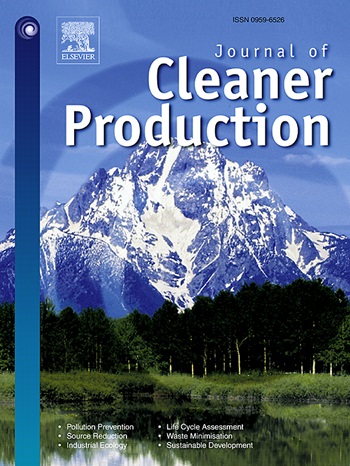Lactic-Acid-based Deep Eutectic Solvent for Sustainable Recovery of Critical Metals from Spent Lithium-ion Batteries under Mild Conditions
IF 9.7
1区 环境科学与生态学
Q1 ENGINEERING, ENVIRONMENTAL
引用次数: 0
Abstract
Recycling critical metals from spent lithium-ion batteries (LIBs) is vital as their widespread application accelerates the depletion of mineral resources. This study presents a sustainable and energy-efficient process for recovering metals from spent LIBs using a deep eutectic solvent (DES) composed of choline chloride (ChCl) and lactic acid (LA) at low temperature, enabling effective utilization of low-grade heat. ChCl:LA DES exhibits strong reducibility and high proton concentration, contributing to efficient lithium extraction from lithium nickel manganese cobalt oxide (LiNi0.5Mn0.3Co0.2O, NMC532) at only 50 °C without additional reducing agents. Moreover, the appropriate coordination stability between ligands in DES and metal ions from spent LIBs enables selective separation of Li and Mn into the liquid phase while reprecipitating Ni and Co as water-soluble solids. This strategic separation can simplify subsequent metal recovery processes from solvents, offering greater advantages over the non-selective dissolution in conventional hydrometallurgical processes. Accordingly, a four-step protocol was developed, achieving selective and efficient recovery of critical metals from NMC532, with extraction efficiency of over 93 wt % for Li and approximately 60 wt % for Mn, Ni and Co. Techno-economic analysis demonstrates an operating cost of $1.49 and a potential total revenue of $16.35 per kilogram of NMC532 processed for metal recovery based on the current market price. This study introduces a cost-effective and sustainable strategy for metals recovery from spent LIBs with eco-friendly DESs and low-grade heat, reducing the environmental footprint and promoting the circular economy.

求助全文
约1分钟内获得全文
求助全文
来源期刊

Journal of Cleaner Production
环境科学-工程:环境
CiteScore
20.40
自引率
9.00%
发文量
4720
审稿时长
111 days
期刊介绍:
The Journal of Cleaner Production is an international, transdisciplinary journal that addresses and discusses theoretical and practical Cleaner Production, Environmental, and Sustainability issues. It aims to help societies become more sustainable by focusing on the concept of 'Cleaner Production', which aims at preventing waste production and increasing efficiencies in energy, water, resources, and human capital use. The journal serves as a platform for corporations, governments, education institutions, regions, and societies to engage in discussions and research related to Cleaner Production, environmental, and sustainability practices.
 求助内容:
求助内容: 应助结果提醒方式:
应助结果提醒方式:


